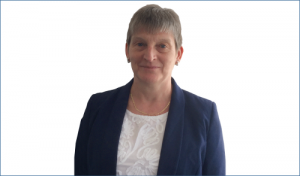
Jane Smallman CSci CMarSci FIMarEST
Jane Smallman CSci CMarSci FIMarEST was appointed 114th President of the IMarEST at its 127th Annual General Meeting held in March. Jane is the first woman to hold the position in the Institute’s 127-year history.
Recapping on her distinguished career, after gaining a PhD in applied mathematics, specifically the computational modelling of water waves around structures, Jane modelled chemical systems for British Gas before moving to HR Wallingford, a specialist consultant in the field of civil engineering and environmental hydraulics. She was initially involved in maritime civil engineering and went on to develop business and manage and direct projects throughout the world. She retired as managing director of HR Wallingford last year, and in addition to her IMarEST activities, is also a part of the advisory board of the Centre for Ecology, Fisheries and Aquaculture Science (Cefas).
1. What are you hoping to achieve in your year as President? What is your highest priority?
I intend to promote four key themes during the year: Inspiring future marine professionals about career possibilities in our industry, promoting lifelong learning as a cornerstone of professionalism, increasing the diversity of the Institute’s membership, and enhancing the Institute’s presence and influence internationally.
The highest priority is attracting more people to join the IMarEST from across the industry so that our membership reflects its breadth and diversity of skills and competences. Our industry is now very much an international one, where marine professionals of different backgrounds and cultures work side by side on a daily basis, so it’s also important we continue to foster this diversity. It’s worth noting that the Institute already has members in over 128 countries, and branches in 23 countries. By the time you read this we will have opened a new branch in the Philippines, with others in the pipeline.
2. What was the most interesting project you’ve worked on in your career and why?
There are many. The projects I was involved with at HR Wallingford all presented different challenges, but I was fortunate enough to work with a great team of people. One that particularly stands out was the the Dahej LNG import terminal, which was HR Wallingford’s first major project in India. I had led the market development there, and we worked on it from inception to commissioning. The terminal was to be constructed on a greenfield site in Gujarat on India’s west coast. The site was characterized by a 10m tidal range, high currents, large waves, particularly in monsoon season, and a high sediment load. It was a real challenge to demonstrate that a jetty extending into deep water was safe to operate on a sufficiently frequent basis to be economically viable. After several visits during the design and construction stages it was a privilege to be invited to the inauguration ceremony in 2009.
3. Traditionally, academic fields such as mathematics were ranked less highly than practical experience on board. Is this changing? How do you see this balance playing out in the future?
We need a wide range of skills to ensure the marine sector’s continued prosperity. To my mind, it really comes down to making the best use of people’s skills and using the right tools for the job. Sometimes people can become to preoccupied by formal qualifications.
There is no doubt that in recent years the marine industry has been attracting too few new entrants, and faces both a shortfall of staff and a serious skills gap. We are not unique in this; many STEM-based sectors face similar challenges. With too few young people choosing to study STEM subjects at school and university and even fewer embarking a STEM-based career path, there are no quick and easy fixes to this problem. For its part, IMarEST introduced its Sea Your Future programme, a multi-tiered initiative devised to help young people map out a career in maritime and to show them where it might lead.
4. Where would you like to see the Institute in 2020?
We will be a financially resilient and diverse organisation, relevant to both the development of marine professionals worldwide and the work of intergovernmental organisations in supporting the achievement of safe, sustainable seas.
5. You are heavily involved with CEFAS. What is your role and why is the work important?
CEFAS is an executive agency of DEFRA, the UK government’s department of environment. It does world leading science in both the marine and freshwater sectors. I am a non-executive director on their management board, drawing on my experience to support the organisation’s strategic development. I’m particularly involved in helping them formulate and carry out plans to expand internationally, especially in the fisheries and aquaculture sector.
6. What do you enjoy doing in your free time?
I like theatre, film, and dance, and visiting galleries and museums. I am a keen gardener and I do a lot of walking, particularly hill walking in Scotland. I also enjoy globe-trotting and experiencing different cultures.





